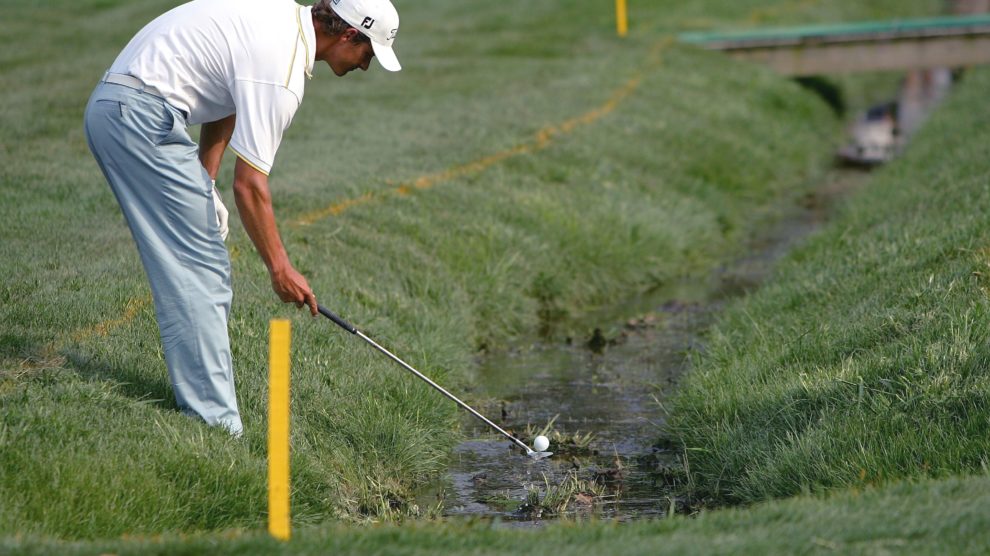On the golf course, there are two different kinds of water hazards: lateral water hazards and regular water hazards. The way to tell the difference between red, yellow and white stakes on a golf course is, of course, their color. Lateral water hazards are marked with red stakes and/or red paint around the perimeter of the hazard. Regular water hazards are marked with yellow stakes and/or yellow paint. White stakes mark out of bounds, and you don't want to be there.
How to take a drop from a yellow-stake water hazard differs significantly from your drop options from a red-stake lateral water hazard.
Yellow-stake water hazards are in place for when the water is integral to the design of the hole, and the golfer is expected to either clear the water or hit around it to continue playing the hole in question.
When a golfer hits their ball in a yellow-stake water hazard, the golfer has two options to drop the ball, take relief and incur a one-stroke penalty:
- Drop the ball behind the water hazard, keeping the point where the original shot went in the water hazard between where the golfer drops and the hole. This is typically the option most golfers take from a yellow-stake water hazard, as it allows them to drop as far back as they wish on the line in which they went in the hazard toward the hole. A golfer can then go back into a friendly lie, whether a flat lie in the rough or right in the fairway.
- Take a stroke-and-distance penalty, meaning the golfer should drop their ball as near as possible to the spot of the original shot which went in the water. This is the most punitive version of relief from a water hazard, but it sometimes makes sense when the original shot was from a comfortable yardage or in the fairway.
No matter the choice a golfer makes to take relief from a yellow-stake water hazard, the golfer can lift and clean their ball out of the hazard (assuming they find it) or can put a new golf ball into play to replace the ball which went in the hazard.
Golfers have been expected to drop from shoulder height, but in 2019, the expected height will change to knee height. This way, it's more likely a dropped ball will stay where a player can take relief, saving time while maintaining the random nature of a drop.
Also in the 2019 edition of the Rules of Golf, the USGA and R&A encouraged more golf courses and tournament committees to declare more lateral water hazards under the new name of "penalty areas."

